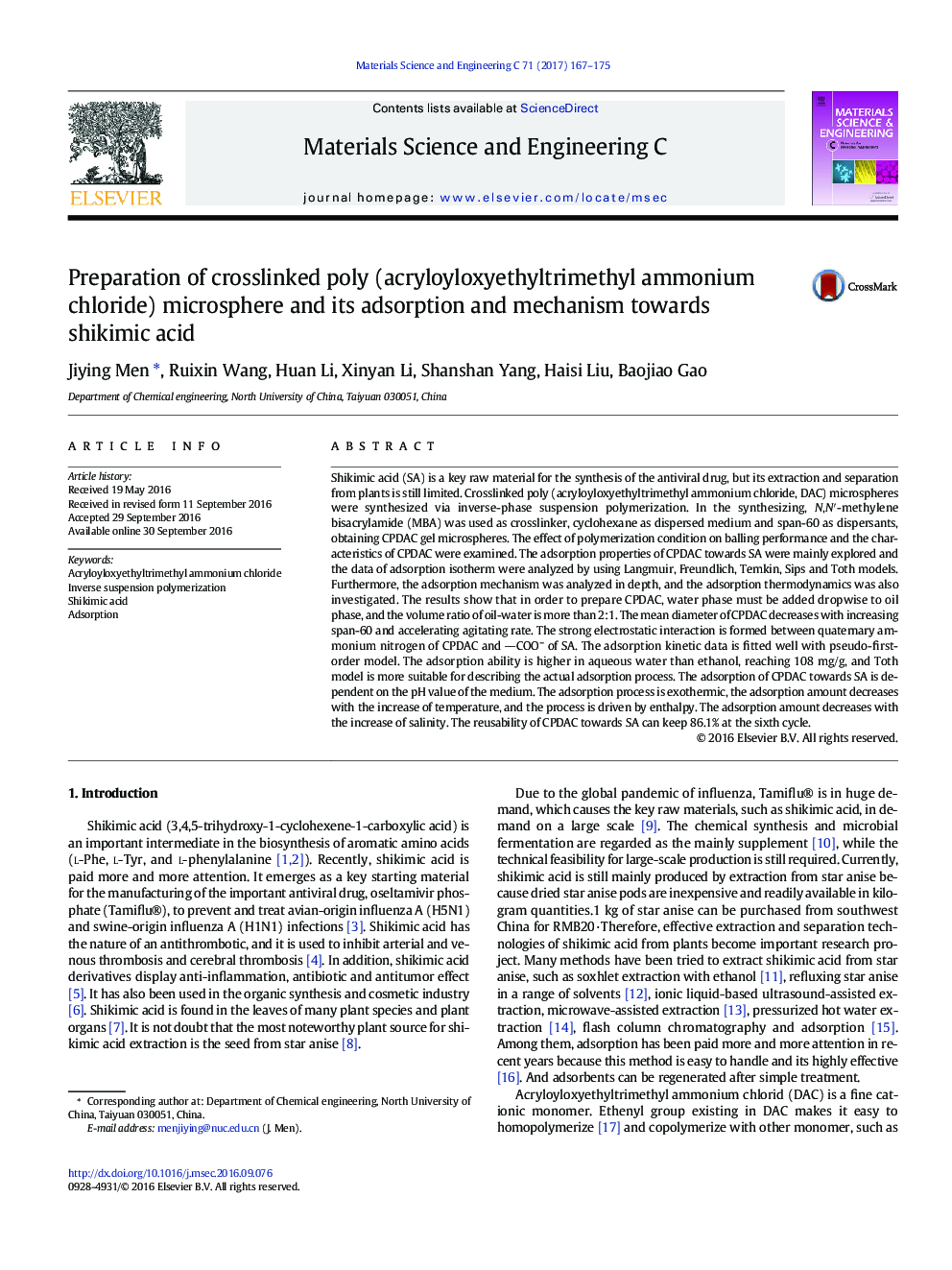| کد مقاله | کد نشریه | سال انتشار | مقاله انگلیسی | نسخه تمام متن |
|---|---|---|---|---|
| 5434619 | 1509150 | 2017 | 9 صفحه PDF | دانلود رایگان |

- CPDAC microspheres were synthesized via inverse-phase suspension polymerization.
- SA was adsorbed strongly by strong electrostatic interaction.
- Pseudo-first-order model describes the observed adsorption process.
- The adsorption process is fitted well with Toth model.
Shikimic acid (SA) is a key raw material for the synthesis of the antiviral drug, but its extraction and separation from plants is still limited. Crosslinked poly (acryloyloxyethyltrimethyl ammonium chloride, DAC) microspheres were synthesized via inverse-phase suspension polymerization. In the synthesizing, N,Nâ²-methylene bisacrylamide (MBA) was used as crosslinker, cyclohexane as dispersed medium and span-60 as dispersants, obtaining CPDAC gel microspheres. The effect of polymerization condition on balling performance and the characteristics of CPDAC were examined. The adsorption properties of CPDAC towards SA were mainly explored and the data of adsorption isotherm were analyzed by using Langmuir, Freundlich, Temkin, Sips and Toth models. Furthermore, the adsorption mechanism was analyzed in depth, and the adsorption thermodynamics was also investigated. The results show that in order to prepare CPDAC, water phase must be added dropwise to oil phase, and the volume ratio of oil-water is more than 2:1. The mean diameter of CPDAC decreases with increasing span-60 and accelerating agitating rate. The strong electrostatic interaction is formed between quaternary ammonium nitrogen of CPDAC and COO- of SA. The adsorption kinetic data is fitted well with pseudo-first-order model. The adsorption ability is higher in aqueous water than ethanol, reaching 108Â mg/g, and Toth model is more suitable for describing the actual adsorption process. The adsorption of CPDAC towards SA is dependent on the pH value of the medium. The adsorption process is exothermic, the adsorption amount decreases with the increase of temperature, and the process is driven by enthalpy. The adsorption amount decreases with the increase of salinity. The reusability of CPDAC towards SA can keep 86.1% at the sixth cycle.
Journal: Materials Science and Engineering: C - Volume 71, 1 February 2017, Pages 167-175